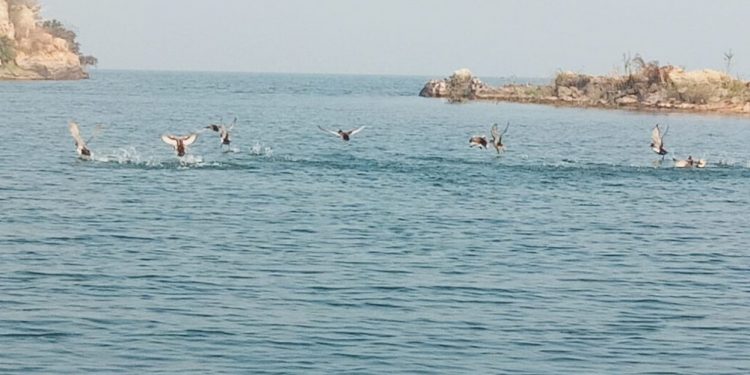Sambalpur: Even as Hirakud dam is the longest in Asia, this place has another identity. Earlier it was known for its huge deposits of diamond and gem stones. People used to scout for diamond stones at this very place. That’s why the place was named as Hira (diamond) kud (an islet/ mound).
It is learnt that an island spreading over 829.32 acres was in the riverbed of Mahandi, about 10 km to the north of Sambalpur town. The island was at the confluence of Mahanadi and Ib rivers. In summer and winter, water used to gather at the place. People of Jhara community living around the place used to scout and collect nuggets of gems and diamond stones.
People used to say that diamond stones were being carried by water of the Ib river and getting deposited at the place.
People of Jhara community particularly collected a kind of red clay from the riverbed and collected diamond. According to 1931 census, 70 people of Jhara community used to reside in the area.
According to historical records, King Abhay Singh had got 16.5 carat of diamond in March 1766. The king had sent his staff Sardar Khan with the diamond to British officer Lord Clive in Kolkata. Lord Clive was keen on diamond trade and sent his officer Thomas Motto to Sambalpur.
At that time, Sambalpur royal estate was churned by anarchy and internal troubles. Such chaotic situation did not allow Thomas to visit Sambalpur.
In 1809, the Marahattas had plundered a big piece of diamond with 210.6 carat from tribal collectors. In 1806, someone named Rafsiz had got two low-quality diamond pieces for Rs 250.
In 1818, a diamond of 84 grains, another two pieces of diamond of 288 and 308 grains from Sambalpur queen were sent to the British government through an agent.
Queen Ratnakumari had sold some diamonds weighing 22 masa for only Rs 52,000, the price much less than its true value.
In 1859, the British took over Sambalpur administration. At that time, some royal ornaments and valuables embedded with two big diamonds had been sent to the British treasury.
In 1856, the diamond mine of Hirakud was put under hammers. Saraswat Behera and Panu Behera, two locals, had taken the diamond mine on lease. As they failed to pay the installments of lease money, the British leased out the mine to Diwan Bahadur in May of that year. In fact, Jhara people were permitted by the king to collect diamond. The British cancelled their permission to collect diamonds. The Jhara people did not cooperate with diamond collection, resulting in the loss for the lease holder.
Historian Deepak Kumar Panda said confluence of the Mahandi and Ib rivers has submerged the Hirakud reservoir. Along with it, the history of diamond collection at the place had taken a burial.
Panda observed that the state government should pay importance on diamond collection. Between 1858 and 1945, a high-level meeting was held regarding the construction of the Hirakud dam. On March 15, 1946, the then Governor of Odisha William Harthon Lewis laid the foundation stone for the Hirakud dam. On the foundation-laying ceremony, kings of Dhenkanal, Athamallik and Paralakhemundi princely states were present.
With the construction of the dam, many temples and villagers were submerged in the reservoir. Historical remains and their testimonies have got their burial in the deep waters of Hirakud dam which plays host to thousands of foreign birds in December every year.
PNN






































